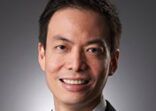Stashaway has launched a Singapore dollar-denominated income portfolio that invests in ETFs, according to a statement from the firm.
The portfolio, which is available to both retail and accredited investors, aims to provide investors with an income of 3.75% and capital appreciation of 4.4% annually, according to the firm’s website.
A spokeswoman for the firm said that the product target an annualised volatility of 5.5%.
It also aims to have a “Stashaway risk index” of 12%, which means that a portfolio with $100,000 has 1% probability of losing more than 12% or $12,000 in a year.
The portfolio is comprised of six ETFs, which invests in equities, bonds and real estate investment trusts (Reits), according to the spokeswoman.
Income portfolio
| ETF | Asset class |
Asset allocation |
| Nikko AM Singapore STI ETF |
Singapore equities |
10% |
| ABF Singapore Bond Index Fund |
Singapore government bond |
10% |
| Nikko AM SGD Investment Grade Corporate Bond ETF |
Singapore investment grade corporate bonds |
34% |
| Lion-Phillip S-Reit ETF Fund |
Singapore Reits |
35% |
| Nikko AM – Straits Trading Asia ex Japan REIT ETF |
Asia ex-Japan Reits |
|
| iShares Barclays USD Asia High Yield Bond ETF |
Asian high yield corporate bonds |
10% |
Source: Stashaway
Reits take up the highest exposure of the portfolio at around 35%. On a 10-year annualised basis, global Reits are one of the highest-yielding asset classes in the equity universe, according to data from Alliance Bernstein (chart below).
Like other income products, Stashaway’s portfolio mixes higher-yielding assets, such as Asia high yield bonds, with lower-yielding assets to control the volatility of the portfolio.

The spokeswoman said that the income portfolio, like the other portfolios that Stashaway manages, makes use of an “economic regime-based asset allocation framework”.
According to the firm, the framework, which monitors various macroeconomic datapoints, allows the portfolio’s asset allocation to automatically adjust in changing economic environments to maintain its risk level.
The income portfolio also has the same fees as the firm’s other portfolios, which can range between 0.2%-0.8%, according to the website.
Launched in 2016, Stashaway now has 100,000 users, the spokeswoman said, but declined to give AUM and average ticket size numbers. Besides Singapore, the firm operates in Malaysia, where it received a fund management licence in November last year.
The firm also just finished a $12m fundraising, which included Eight Roads Ventures – the proprietary investment arm of Fidelity, and private equity firm Asia Capital and Advisors, according to the statement. In total, the firm has raised $24.4m in three funding rounds.
Income demand
Management believes that there is growing demand for investment products that provide income.
“We introduced this income portfolio after receiving strong demand from our clients and important feedback from potential clients that they want this type of investment to grow their money,” Michele Ferrario, co-founder and CEO, said in the statement.
Indeed, the launch of the portfolio comes at a time when Singapore investors have been pouring money into income funds.
During the first half this year, income funds dominated the top selling list of Singapore-domiciled funds, according to data from Broadridge Financial. Two of those income products are relatively new to the market: the Fullerton SGD Heritage Income Fund was launched in May, while the Phillip Sing Income ETF was rolled out in October last year.
“Investors have been piling into income-oriented funds for the past few years,” said Yoon Ng, director of Apac insights for global market intelligence at Broadridge.
“There is strong demand for funds which can provide downside protection, access to upside potential and a regular income stream,” she said.
Other fund management firms have taken advantage of the trend toward income products. Aviva Investors, for example, applied in July with the Monetary Authority of Singapore to launch the Sustainable Income and Growth Fund, which aims to earn income, targeted 5% annually, while BNP Paribas Asset Management launched earlier this year the Parvest Multi-Asset Income Europe Fund.
Income continues to be important for investors in Asia and not just in Singapore. According to findings from a previous Cerulli Associates report, regular steady income payments are the most important feature for investors in the region.


















